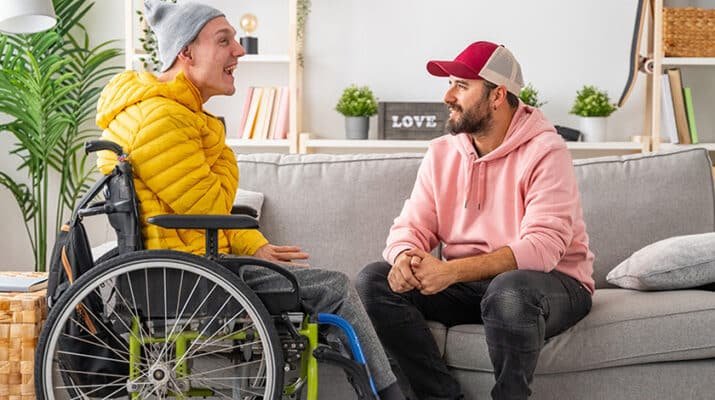More resources are needed in the Central New York area
By Deborah Jeanne Sergeant
The COVID-19 pandemic highlighted the need for greater availability of nursing home and assisted and independent living opportunities for older adults.
Too few staff and too few residences mean that this population has few choices when they begin to need more support.
The same is true of people with developmental disabilities as they come of age.
As parents of people with disabilities grow older and die, parental support will not be available. But those who want to and are able to live independently of their families as young adults have few places to go.
Group homes are in short supply as are workers who support them.
Typical setups include a private bedroom and bathroom for each resident with shared living rooms and kitchens. Workers staff the group home 24-7 with the level of assistance needed to help residents with activities of daily living.
The Office for People with Developmental Disabilities in Albany provides certified housing support to more than 35,000 people with developmental disabilities statewide. The OPWDD invests more than $5 billion annually to maintain and develop more housing options for people with developmental disabilities.
“Frontline staff, such as direct support workers, are critical to helping people with developmental disabilities reach their goals and be active and inclusive members of our communities, as well as ensuring people’s health, safety and wellbeing,” said Jennifer O’Sullivan, director of communications for OPWDD.
Despite these efforts, housing options remain tight for people with disabilities, according to Eric Boye, vice president of mental health services and employment program at Access CNY in Syracuse.
“There is limited space for people with disabilities to find a housing placement,” Boye said. These programs tend to be permanent, so once people get into a housing support program, they’re able to keep it. The challenge is getting placed. The need outweighs capacity.”
Access CNY offers community habilitation programs and individual support services to help people with disabilities access rent support and other services. One of the problems Access CNY encounters is buildings that were not constructed with accessibility in mind. Many of the more affordable homes are older construction and not accessible.
Although new construction is accessible, it’s less affordable. Boye said that sometimes, neighbors object to the presence of a group home or supported apartment, even though only two to four people would occupy the residence.
“Driving by, you’d never know it was supported living,” Boye said. “Being part of the community helps people have inclusion.”
Dave Devendorf, program director with supported employment programs with Access CNY said that supported living options should be better funded.
“Everyone does their best with the funding available but there’s more funding than people,” he said.
The OPWDD maintains that potential funding increases and other efforts should improve the situation.
“New York has taken aggressive action over the past several years to counteract the workforce shortage being experienced by OPWDD and our provider agencies, as well as most human services organizations across the country, including enhanced wages and bonuses, professionalization of the workforce and through our #MoreThanWork recruitment campaign,” O’Sullivan said.
The state’s executive budget proposes a 2.1% targeted inflationary increase for all OPWDD providers to further address rising operating costs and cost of care. O’Sullivan said that when added to funding that has been provided since 2022 for cost-of-living increases, rate updates, bonuses, and American Rescue Plan projects, the proposals add up to almost $4 billion invested in the developmental disabilities service system over the last four years.
Training support workers is also a big priority to OPWDD, which has been working with SUNY and National Alliance for Direct Support Professionals to offer credentialing and certification to direct support workers.
These efforts “improve retention among staff and professionalizing the career,” O’Sullivan said. “More than 2,000 DSPs and frontline supervisors having earned their national certification — as well as college credits and stipends — in the last year.”

